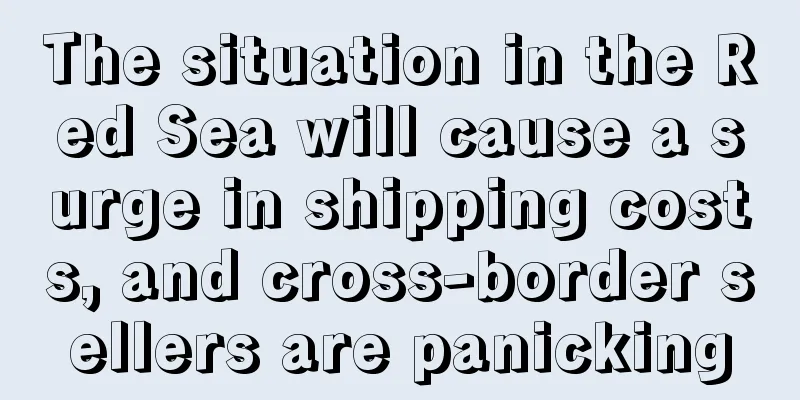The situation in the Red Sea will cause a surge in shipping costs, and cross-border sellers are panicking

|
A speck of dust from the times becomes a mountain when it falls on a person's head.
Since the outbreak of the Palestinian-Israeli conflict, the two sides are still in a state of tension, and its spillover risk - the Red Sea crisis has intensified. While affecting international shipping, it has also brought chain shocks to the cross-border circle.
It is learned that the Suez Canal-Red Sea route is the throat of Asia to the Mediterranean and Europe, and it is also the main channel for maritime trade between Asia and Europe. However, as the Palestinian-Israeli conflict has not subsided, ships passing through the Red Sea, the Bab el-Mandeb Strait and nearby waters have been frequently attacked by Houthi armed forces . Since mid-to-late December, many global shipping giants have successively pressed the "pause button" on the Red Sea route.
From December 15 to 16, the four major shipping giants - Switzerland's MSC, Denmark's Maersk, France's CMA CGM and Germany's Hapag-Lloyd announced separately that they would suspend all container ship transportation through the Red Sea route.
Starting from December 19, shipping companies such as COSCO, Evergreen, ONE and OOCL have also announced the suspension of bookings on the Red Sea route:
|
<<: Amazon's new feature has been criticized by everyone! Sellers: It's better not to use it!
>>: Orders plummeted by 75%, and 70% of sellers’ annual profits shrank!
Recommend
2024 US Christmas shopping season: Online sales increased by 4%, 71% of consumers plan to shop after the holiday
It is learned that recently, according to the late...
Amazon’s “cannibalistic” agreement has been officially condemned. Is there hope for changes to its pricing policy?
As the leader of cross-border e-commerce platforms...
211 billion US dollars market! The top 20 brands in the global resale market are announced!
IPMARK.com has released the 20 most popular brands...
Amazon tightens its investment policy! The "business scope" review is coming again...
The outbreak is also changing the habits of overse...
What is eBay API? eBay API Review
The eBay API is an application programming interfa...
No longer renewing the contract with FedEx, UPSP will reach a new cooperation with UPS!
It is learned that on April 1, according to foreig...
To help you ride the wave during the peak season, have you received these benefits?
A year's plan starts with winter, and a big sa...
Q4 US shopping app downloads return to 100 million! Black Friday hits record high
It is learned that the latest report from SensorTo...
What is Yuntu Logistics? Yuntu Logistics Review
YunExpress is China's leading cross-border B2C...
The US election is reversed again? Trump: I won! Searched 600 million times, these products are popular!
Although Biden has already won the US election, Tr...
Search volume surged by 26,000%! Riots in 70 cities in France, the third wave of the epidemic broke out in Japan, will this type of product become popular again?
December 4th was Black Friday on the French site. ...
What is Keyword Eye? Keyword Eye Review
Keyword Eye is a visual keyword and competitor res...
Amazon sellers blast the one-day-off-and-two-day-off policy: I didn’t have a choice before, now I just want two days off
▶ Video account attention cross-border navigation ...
Sales increased by 4279%! TK solved the Amazon Prime Day product selection and traffic dilemma
May is about to pass. Amazon’s Prime Day in July i...
What is Cybellum? Cybellum Review
Cybellum is an Israel-based cybersecurity startup ...









